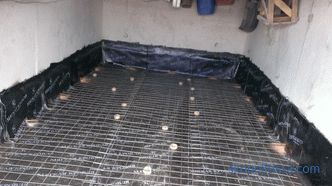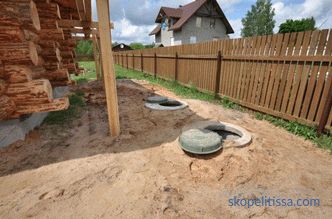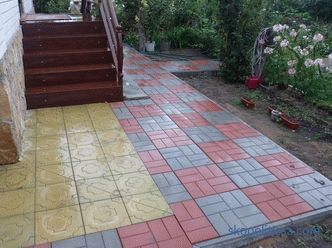This article contains information about why you need to clean the pond, how it can be done and how much it costs to clean the pond. After receiving this information, you will have basic knowledge that will allow you to avoid extra cleaning costs without compromising the desired result. In addition, it will provide an opportunity to optimally plan the budget for the maintenance of an artificial reservoir. After all, systematic cleaning in the long run will be cheaper than time-consuming and costly elimination of the effects of untimely care of the pond.
Why is cleaning needed
Unlike from a reservoir created by nature, artificial does not have the same effective natural self-cleaning system that ensures biological balance. This is the main reason that after a certain time the pond should be cleaned: without this procedure, the reservoir will be silted and overgrown with vegetation, the water in it will become unsuitable for fish. As a result, instead of an attractive resting place, we will get a big “puddle”, from which an unpleasant swamp odor emanates. Cleaning the pond from sludge will avoid the following negative phenomena:
-
decrease of the oxygen level in water;
-
active reproduction unicellular algae;
-
clouding and water blooming.
The main causes of pollution and silting are such processes :
-
human activities , from which garbage and drains (household and industrial) appear;
-
vital activity of water living organisms ( including fish);
-
leaves and branches from the bushes and trees that enter the water;
-
grass entering the water , soil from the surrounding area;
-
waste products pets .
The main methods of purification of an artificial reservoir
Depending on the condition of the pond, it can be cleaned in two directions. If the reservoir is taken care of systematically, water treatment will be sufficient. It can be done in the following four ways:
-
mechanical ;
-
chemical ;
-
with the help of ultraviolet ;
-
biological .
Mechanical cleaning involves the use of filters with fillers ( sand, sand and gravel mix, special granules). They provide removal of particles of earth, grass and other debris from the water circulating in the pond. Using chemical reagents, you can decompose hydrogen sulfide, phosphates, organics, phosphates and other waste products of animals and plants into water and carbon dioxide.
Ultraviolet radiation kills lower algae and bacteria that are clogging up water. Its impact does not destroy fish and other animals that are inhabitants of the pond (snails, mollusks, plankton, which is their food supply). For this method are used ultraviolet lamps with significant resource. Certain bacteria are used for biological purification, their colonies are placed in a special compartment of the filter that cleans the circulating water in the pond. Bacteria process proteins and fats dissolved in water into gas.
on our website you can find out more popular in Moscow suburbs for the construction of a country house . In filters you can set the desired direction, the presence of gas, water, electricity and other communications.
If the water in the pond does not undergo systematic cleaning, this will result in the need to clean the bottom of the reservoir. It is precisely at the bottom that silt and garbage are gradually accumulating, without its removal it will be impossible to restore the balance of the biological system. There are two ways to clean pond from sludge and debris:
-
without pumping out water;
-
pumping out pond fluids.
Purification without pumping out water is considered a less effective method, since in this case a certain part of the sludge deposits is stirred in a liquid medium, and after the end of the process it settles again at the bottom. Also, the use of expensive pumping equipment causes a higher cost of work regarding cleaning with pumping water. However, this method allows minimizing the damage to the ecosystem of the reservoir and its environment.
Most often, a specialized installation, a dredger, is used to carry out such work. It is a system of pumps driven by gasoline engines.This is a universal device that allows not only to clear the bottom of silt and remove algae, but also to deepen the bottom of the pond and wash over the soil and sand to arrange the coastal zone.
Cleaning the pond with the pumping of liquid into the pre-equipped reservoir tidying up an artificial reservoir. After pumping the pump water the reservoir is left for several days to evaporate moisture. When the bottom dries to the desired state with the help of special equipment it is cleared of accumulated sludge. The removed mass of sludge and excess algae is dried on a separately prepared site. In the future, it can be used as a fertilizer on the site or recycled (exported to the landfill). After all the work, the water from the reservoir is pumped back into the pond, and the reservoir itself is treated with special biopreparations that help restore the biological balance.
on our website you can read with the most popular projects of "small forms" for a private house - from construction companies represented at the exhibition "Low-Rise Country".
What determines the cost of work
How much does it cost to clean the pond at the cottage? The price of work on cleaning the reservoir is determined by several main factors:
-
of the type of the reservoir;
-
of the selected method cleaning;
-
soil type at the bottom of the reservoir;
-
having access roads for special equipment;
-
distances to groundwater;
-
depths of the reservoir;
-
availability of the possibility of the removal and storage of soil;
-
of the volume of water entering the reservoir;
-
of the list of main and auxiliary works;
-
terms and of the year of work, etc.
-
cleaning from vegetation and sediments at the bottom without pumping out water - from 300 rubles per cubic meter ;
-
cleaning of garbage , sediments at the bottom, vegetation with pumping out of liquid - from 150 rubles per cubic meter;
-
water treatment with biological products to restore his ability to self-purification - from 60 rubles per square meter of water;
-
mowing aquatic vegetation - from 70 rubles per square meter m;
-
turnkey construction of the beach area - from 900 rubles. for the quarter. m.
From the video you can learn how to clean the pond with your own hands:
It may be interesting! In the article the following link read about a country house with veranda .
Overall result
In order for the pond to live for a long time and to please its owners with the pleasant coolness of the water it is necessary to take care of it systematically. At the same time, given the complexity of the ecosystem of water bodies, the presence of many internal and external factors affecting it, this care should be based on a scientific approach and modern technologies. This can only be ensured by specialists with special knowledge, relevant experience and technical means.
Rate this article, we tried for you




